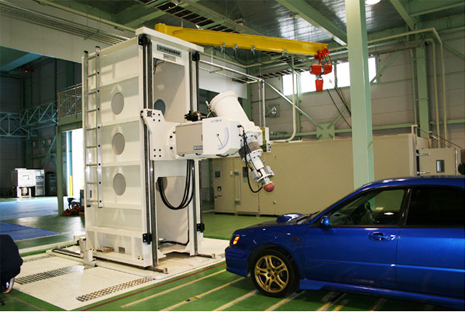This website uses cookies so that we can provide you with the best user experience possible. Cookie information is stored in your browser and performs functions such as recognising you when you return to our website and helping our team to understand which sections of the website you find most interesting and useful.


ITEMLIST
Products Infomation

Pedestrian Protection Impact Tester
The Pedestrian Protection Impact Tester can measure physical damage when the incident happen. Car accidents in which pedestrians are hit by cars moving at a certain speed and their heads/legs collided against car bonnets or front windshield are assumed. Various kinds of impactors on this machine simulating adult or child pedestrian's bodies (head/legs impactors) impact toward the automobile to measure injury values.
These tests evaluate the likely injury to the occupant on the non-struck side of the vehicle and encourages vehicle brands to include features, such as centre airbags, to reduce excessive movement of the occupants across the vehicle. Pedestrian Protection in the future.
This product is required UN R127, and is also based on JNCAP, which already requires the pedestrian head protection/ leg protection impact test, and is used at the Japan Automobile Research Institute (JARI). ASEAN NCAP is willing to focus on the Pedestrian Safety when the car crash, according to ASEAN NCAP protocols until 2025.
This product that can be also customized according to customer requirements.
Pedestrian Protection Tester
Maker:
S-Tech inc.
Features / functions
- A shock tester that can perform pedestrian protection performance tests of domestic standards and automobile assessment (JNCAP) EEVC / WG17.
- The free flight impact test of the head model and leg model can be reproduced on the test table by the output conversion barometric cylinder.
- The injection direction and injection position can be electrically remotely controlled according to the collision point of the vehicle under test, and all the setting operations can be controlled within the specifications.
Specification
| The size of the testing machine | Approximately 4700 x 3700 x 4300 mm |
| Weight of testing machine | About 11000kg |
| Acceleration method | Forced acceleration method using variable output pressure type injection cylinder |
| Rotation angle around Y axis | 30 degrees to 0 degrees to 90 degrees |
| Forward / backward (X-axis) direction movement | 0 to 1400 mm |
| Left / right (Y-axis) direction movement | 0-2400mm |
| Up / down (Z axis) direction movement | 400-3000mm |
| Injection speed | ~ 11.1m / h |
* The amount of movement can be changed to the desired distance.






